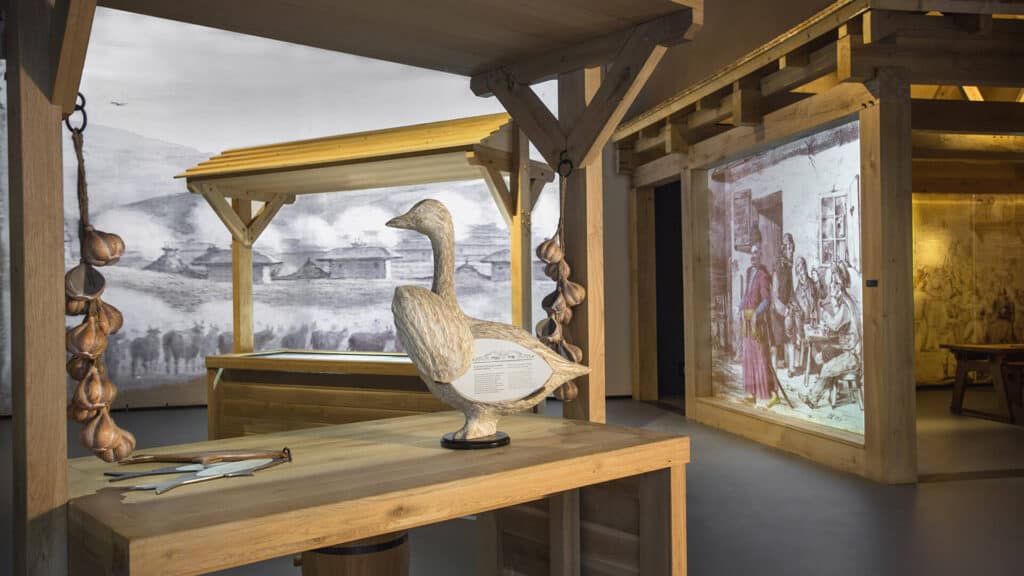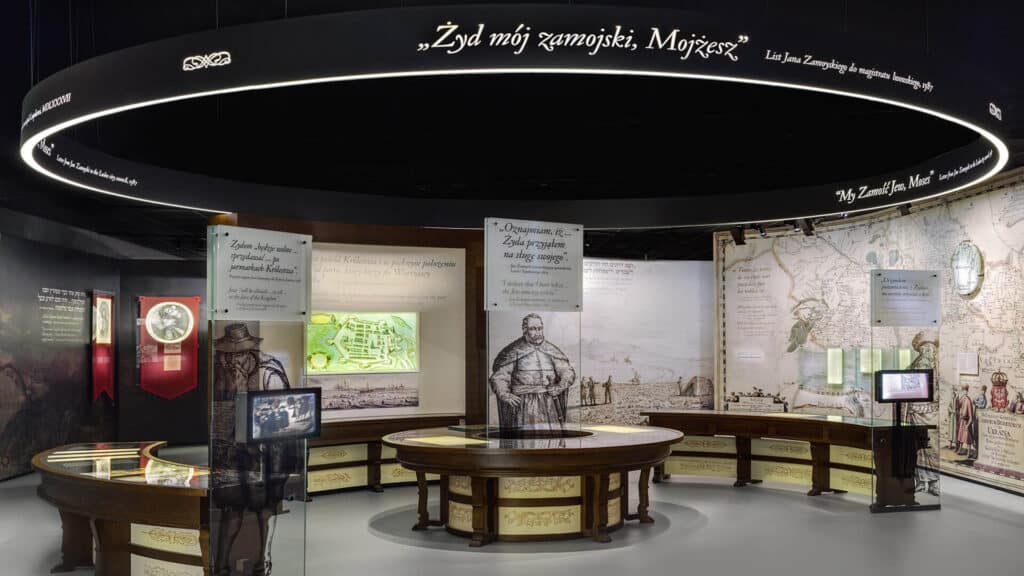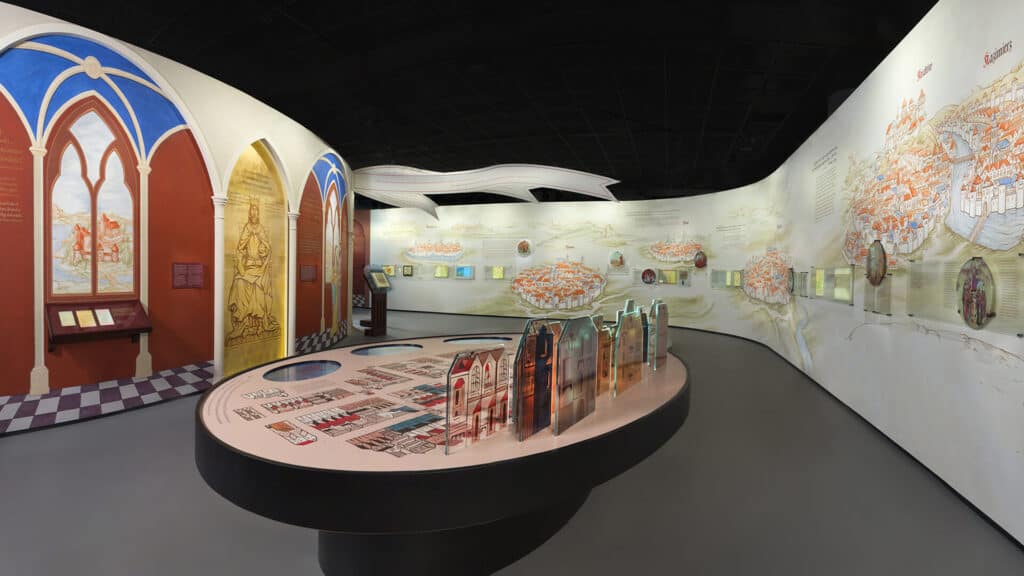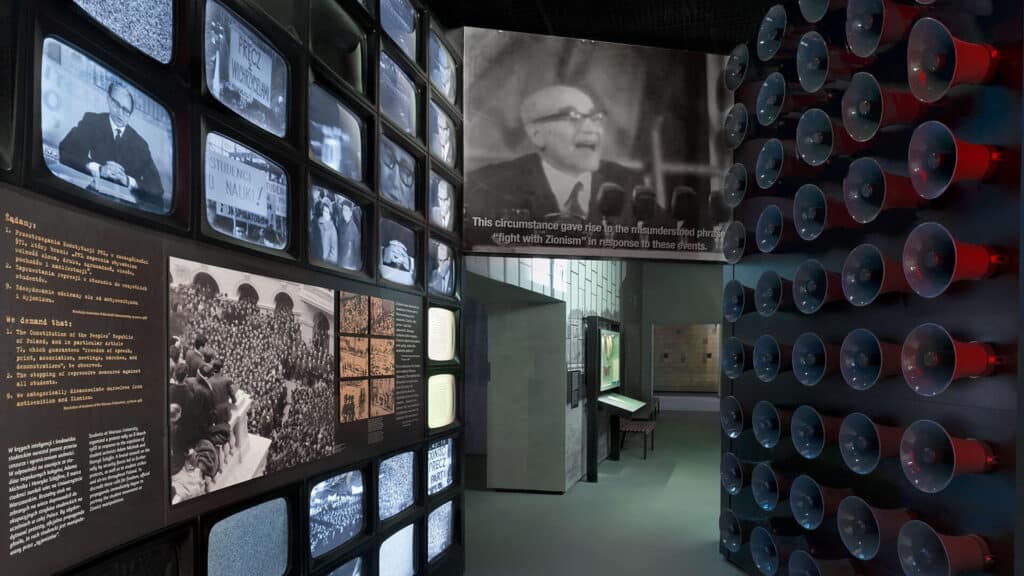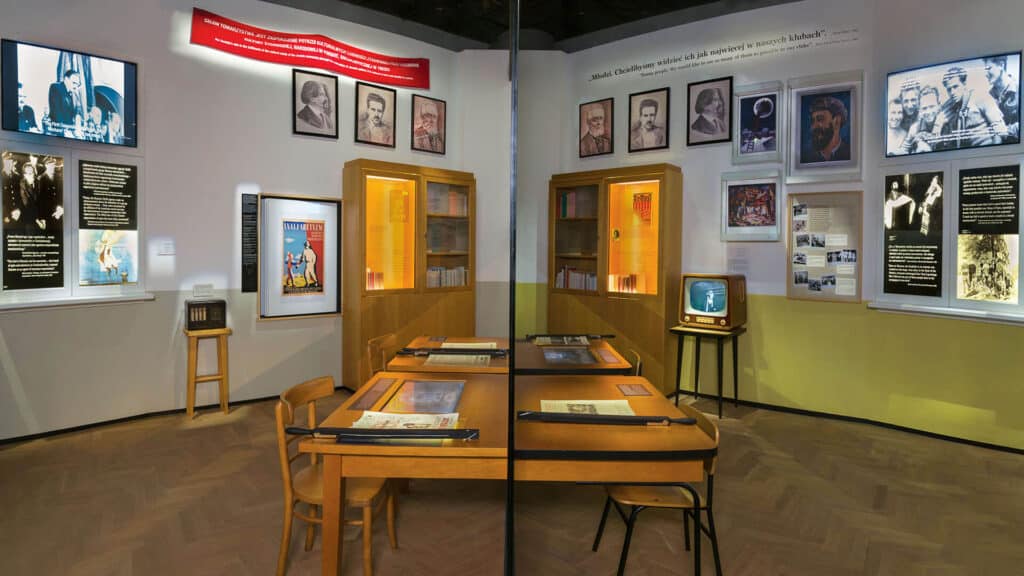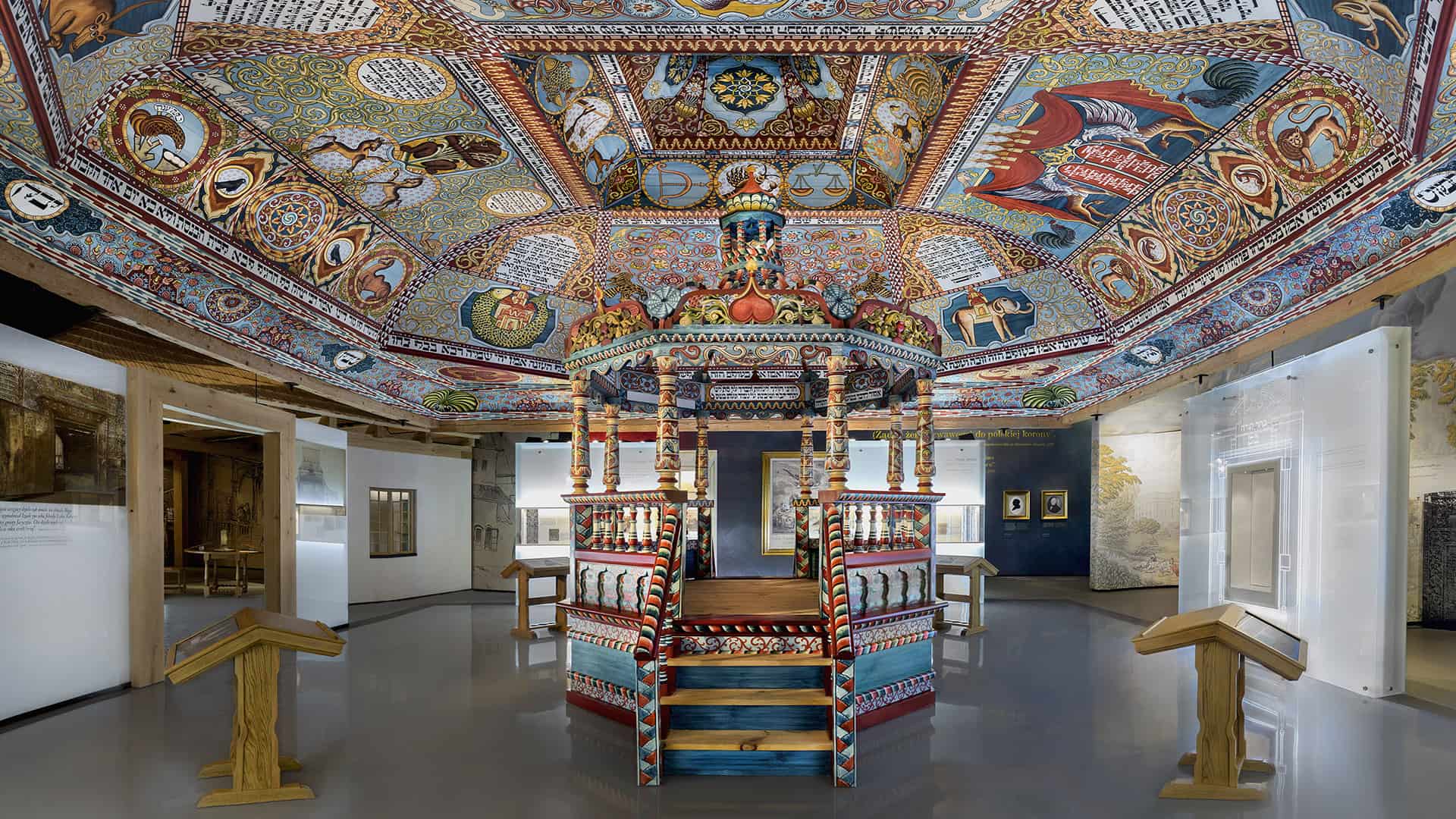
POLIN Museum of the History of Polish Jews in Warsaw
The core exhibition of the POLIN Museum of the History of Polish Jews is the largest narrative historical exhibition ever staged in Poland. It was open on 28 October 2014. The core exhibition presenting the thousand-year-long history of the Jewish people on the Polish soil has been developed by the architectural studio Nizio Design International. The eight museum galleries are filled with the scenography that has been specially prepared for the purposes of the exhibition. The specific nature of the story told through the exhibition and the relatively small number of surviving historic objects caused the designers to have to create from scratch the forms, objects, and materials referencing to those originating from centuries ago. A large part of the exhibition’s elements is comprised of unique prototypes that have never been applied in this kind of exhibitions.
The core exhibition relies on passive and active multimedia stations, furniture, paintings, decorative elements, and rare historic objects. All of the exhibition’s components have been delivered by select teams of architects, historians, graphic designers, craftsmen, visual artists, animators, and visualists. The scenography at each gallery tells a separate story, in terms of the form and content, and its individual elements are styled to the given period.
Mirosław Nizio’s studio Nizio Design International worked on the design and construction of the core exhibition in the years 2011-2014. Both the spatial layout and the materials used are subordinated to the logic of the historical narrative.
Museum galleries:
Forest
First Encounters
Paradisus Iudaeorum
The Jewish Town
Encounters with Modernity
On the Jewish Street
Holocaust
Postwar Years
While designing and delivering the core exhibition Nizio Design International took care to use the best materials that met the ultimate standards of quality, appearance, and safety. The materials used for the construction, such as wood, concrete, and steel are going to nobly age and gain expression with the passage of time. The very design works took one and half years, while it took more than two years to actually build the exhibition. The design works overlapped with the construction of the core exhibition.
The Event Communications company developed the concept proposal of the exhibition in the years 2000-2003. Next, they worked on the detailed design in the period 2006-2011. The Polish architectural studio Nizio Design International completed the design and supplemented it with the graphic design, as well as prepared the building and detailed documentation and built the exhibition between 2011-2014. Nizio Design International has also developed the detailed design of the Forest gallery and the Post-89 installation.
